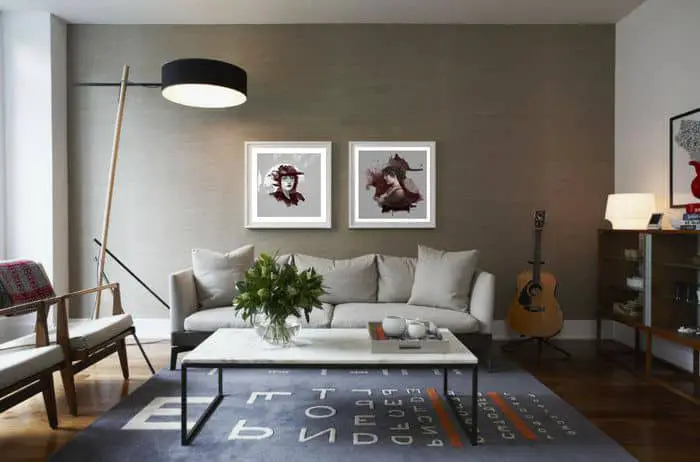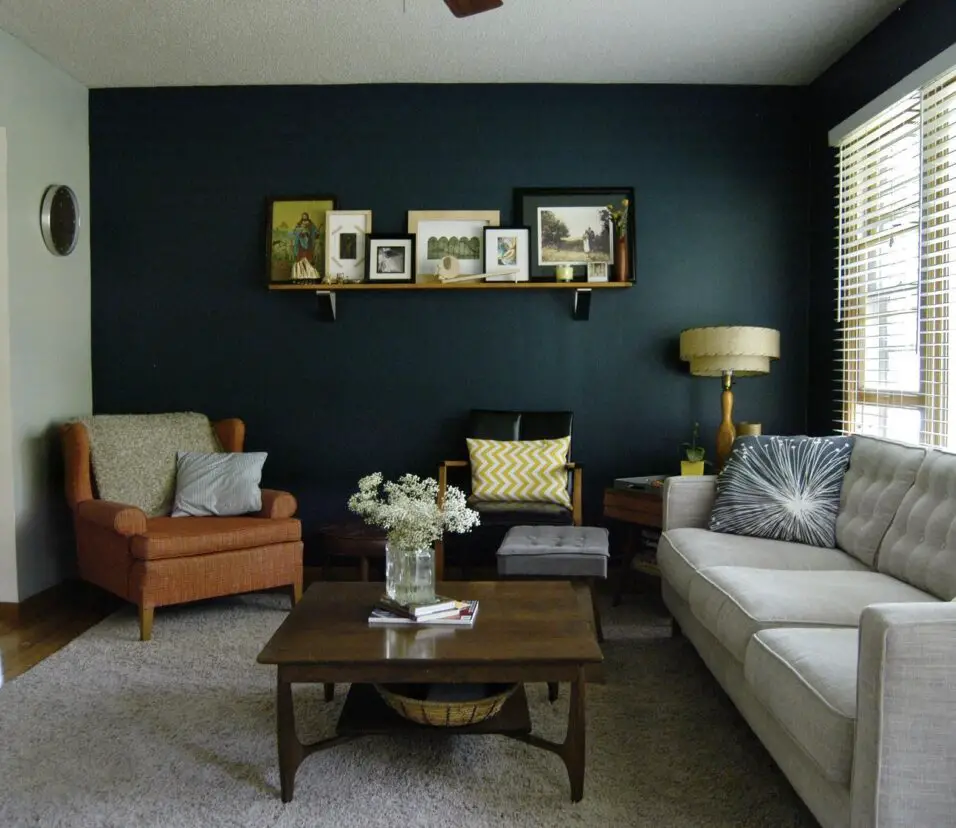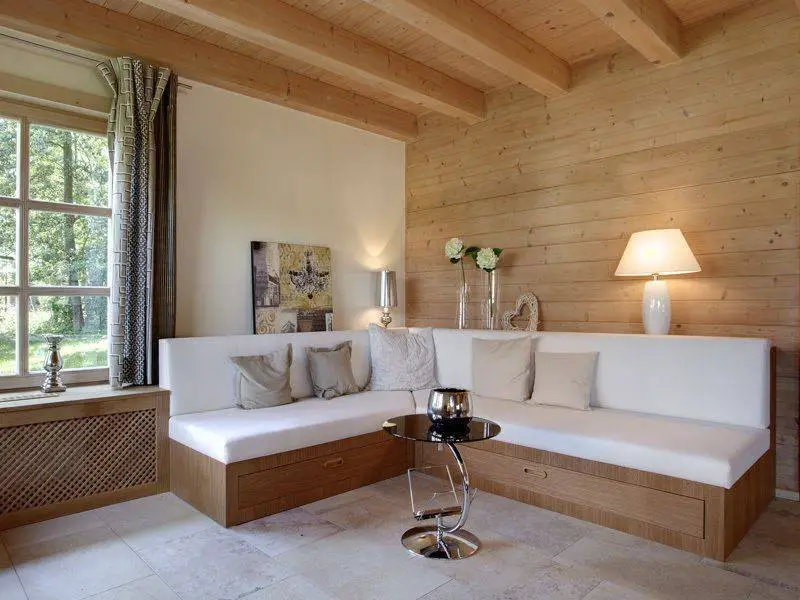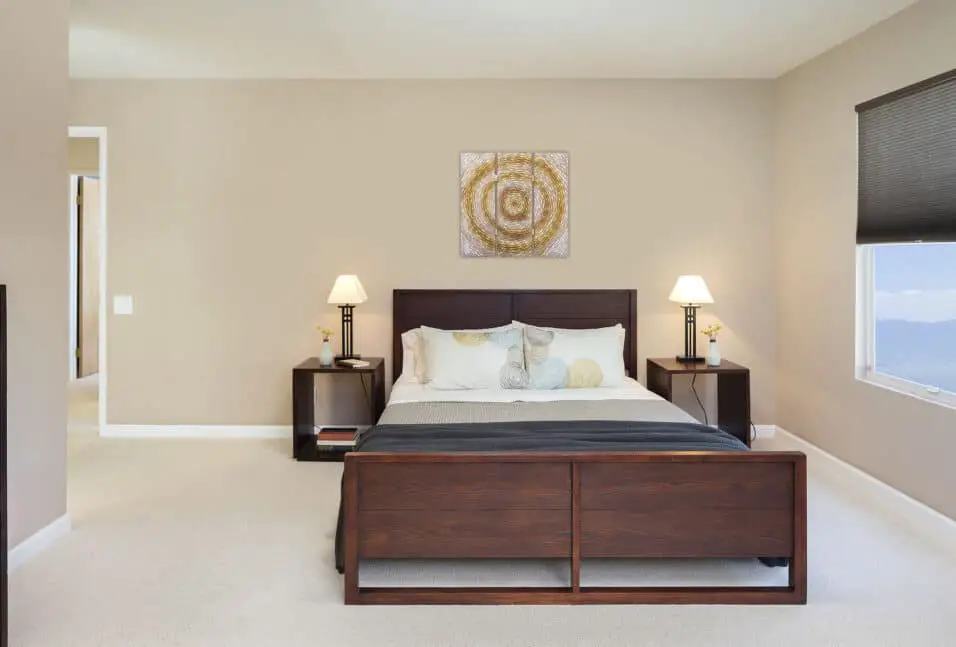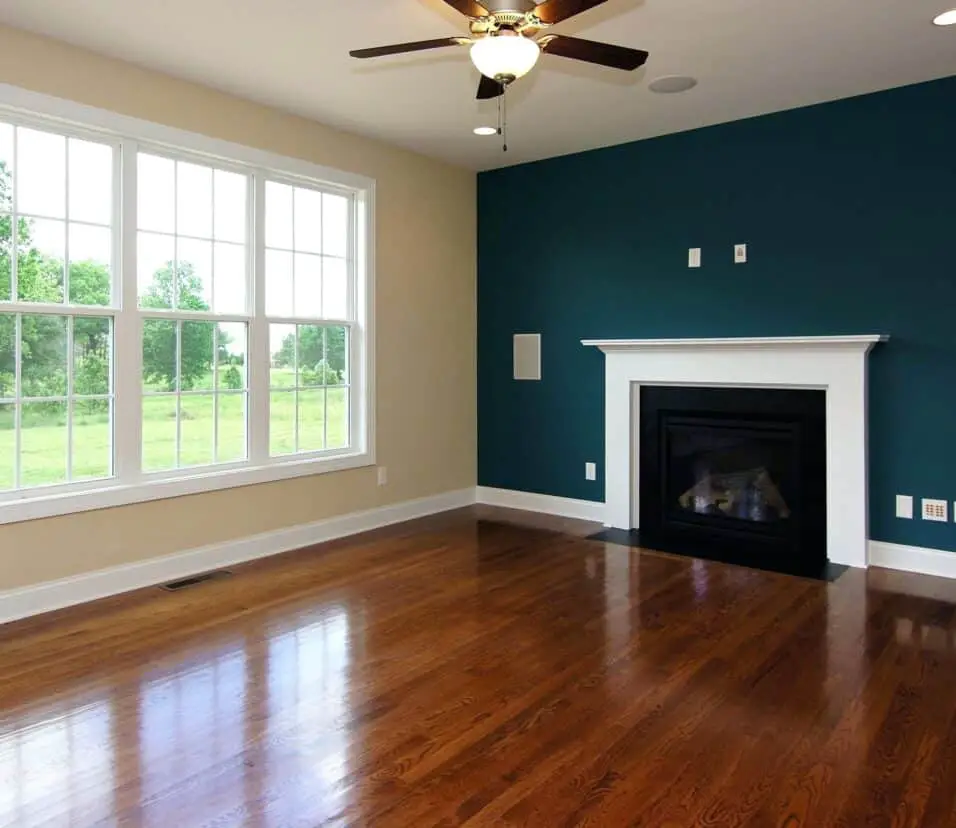Are Accent Walls Outdated
Introduction
Are Accent Walls Outdated: Accent walls may make a room stand out, according to proponents. Accent walls may add drama and flair to a simple room, according to proponents. They say accent walls let homeowners experiment with bright colors and patterns without dominating the room. They can make a statement and add style by focusing on one wall.
Critics say accent walls are overdone and predictable. However, accent wall detractors say they are too common and predictable. They say accent walls are so common that they no longer have the same impact. They can make a room look disconnected instead of interesting. Some designers prefer a more integrated color and design scheme where all walls blend to create a single area.
The debate about whether accent walls are outdated or not continues to divide opinions in the world of interior design. While some still swear by their ability to transform a room and add a touch of personality, others argue that they have become overused and predictable. Ultimately, the decision to incorporate an accent wall into your home should be based on your personal style and preferences. Whether you choose to embrace this trend or opt for a more cohesive approach, it’s important to create a space that reflects your individuality and makes you feel at home.

Why designers don t like accent walls?
She said the style was “undone”: “Accent walls just make you feel like you fell in love with the design but didn’t really go for it.”Adding a lot of wood trim or color to the room finishes the look.08-Aug-2022
Accent walls have been used by home designers for a long time. They add color and depth to a space, making it more interesting to look at. People like accent walls in their homes, but designers have mixed feelings about them. This piece talks about why designers don’t always use accent walls and what problems they might cause.
Reasons for designers’ reservations:
Accent walls can disturb a space’s flow and balance, which is why designers dislike them. Accent walls can upset a room’s balance, which designers aim for. An accent wall can dominate the room and overpower other design components instead of blending in.
Another worry for designers is that accent walls age quickly. Designs change, so what’s trendy now may not be in a few years. Since accent walls use vivid colors or patterns, they can quickly become outdated and need periodic updating. Accent walls might hamper designers’ efforts to create timeless settings that will last.
Drawbacks of accent walls:
While accent walls can add visual interest to a room, they also have some drawbacks that designers take into consideration. One of these drawbacks is that accent walls can make a space feel smaller. This can be particularly problematic in smaller spaces where maximizing the perception of space is crucial.
Additionally, accent walls can be challenging to incorporate into open floor plans. Open concept living areas have become increasingly popular, and designers strive to create a seamless flow between different zones. While accent walls can be a popular choice among homeowners, designers often have reservations about them.
Should I do an accent wall or not?
A bright feature wall can make a room feel more alive. Pick your accent wall with care, because it will stand out. With accent walls, you can draw attention to built-in bookshelves, fireplaces, and other features.
Rooms with accent walls are interesting and unique. Walls with different patterns or colors make a focus point and give a design depth. Whether or not to do an accent wall depends on the size, purpose, and style of the room.
How big and how tall:
When choosing an accent wall, you should think about how big the room is. It can feel stifling in small places when accent walls are there. You can divide up spaces with accent walls or make bigger rooms feel cozier with them. Room size and the effect of an accent wall need to be matched.
What the room is for:
When choosing an accent wall, think about what the room is used for. Accent walls add style to living rooms and bedrooms by drawing attention to furniture and art. Kitchen and home office accent walls that are too busy can make it harder to get work done. Accent walls should go with the purpose of the room.
Already-There Decor:
When choosing an accent wall, think about how the room is decorated. With strong or busy themes, accent walls might be too much for a room. Accent walls can add color and visual interest to a room that is mostly white or black. An accent wall shouldn’t take away from the rest of the room’s design.
Whether or not to do an accent wall depends on the size, purpose, and style of the room. An accent wall can change the look of a room by adding bold colors, textured wallpaper, or unique designs.
Are accent walls timeless?
Will accent walls always be in style? It’s up for discussion between homeowners and interior designers. Some people think accent walls are just a trend, but others think they’re stylish. This piece talks about accent walls and how long they last.
To begin, learn about accent walls. Accent walls in a room are painted or designed in a different way. It’s common to draw attention to a certain place or architectural feature. Accent walls can be made of stone, wood, paint, or wallpaper.
People like accent walls because they give the room more depth. Accent walls with different colors or patterns make a place stand out and add style. Accent walls can help divide and close off rooms with high ceilings or big open areas.
With decorative walls, you can show who you are. They let people try out different colors, textures, and designs without taking over the room. An feature wall with a bright color or pretty wallpaper can show off the person who lives there.
Accent walls should be used in patterns that will last. Even though they look nice, they may become outdated. Interior design styles might not be cool in a few years. The style has to look good and go with the times.
Should I have an accent wall in living room?
A wall in a different color that stands out in the living room is great. This makes us feel balanced and makes the room feel calm and welcoming.
Starting off:
Accent walls can make living rooms look better and draw attention to certain areas. It’s normal to give one wall a different color or pattern of paint or wallpaper. There are many things to think about before you add an accent wall to your living room.
Advantages of Accent Walls:
Adding an accent wall to your living room can make it look better right away. A wall with a strong color or design makes the room more interesting. You can also use it to make art, pictures, and other items the main focus of the room.
An accent wall can separate a living room with an open layout. You can clearly separate the seating area from the dining or kitchen area and make it look better by painting or wallpapering one wall in that area.
Pre-Accent Wall Things to Think About:
Accent walls can make a room look better, but there are a few things to think about. Check out the size and shape of your living room. Adding accent walls to a small or crowded room might make it look even smaller. If you paint all the walls a light, neutral color, the room might look bigger.
Look at the layout and colors of your living room. The feature wall should follow the style of the room. If you add a bright color or design to the accent wall, it might make the room look too small. It might be better to use a duller accent wall color or design.
You can decide if your living room needs an accent wall based on its size, style, and likes. Your living room might stand out and be the center of attention with an accent wall. But these things need to be thought about, and the accent wall color or pattern needs to match the style of the room.
Where not to put an accent wall?
So avoid putting an accent wall in a small, enclosed space. Additionally, avoid accent walls in rooms with little natural light. In these situations, an accent wall will break up the room and make it feel small.
Introduction:
An accent wall is a popular design trend that involves painting or decorating one wall in a room to create a focal point or add visual interest. It can be a great way to add personality and style to a space. However, not all walls are suitable for an accent wall. In this article, we will discuss where not to put an accent wall and why.
Location and Purpose:
When considering where to put an accent wall, it is important to think about the purpose of the wall and its location within the room. One common mistake is placing an accent wall on a wall that already has a strong architectural feature, such as a fireplace or a large window. In these cases, the accent wall can compete with the existing focal point and create a visual overload. It is best to choose a wall that is relatively plain and lacks any significant architectural elements.
Color and Lighting:
The color of the accent wall is another important factor to consider. It should complement the overall color scheme of the room and enhance the existing décor. Avoid choosing a color that clashes with the surrounding walls or furniture. Additionally, lighting plays a crucial role in accent walls. If the chosen wall does not receive adequate natural or artificial light, the accent color may appear dull or unnoticeable. It is essential to ensure that the wall is well-lit to make the accent color pop.
Bedroom and Kitchen:
In certain rooms, such as the bedroom and kitchen, it is generally not recommended to have an accent wall. In the bedroom, the focus should be on creating a calm and relaxing atmosphere conducive to sleep. Having a bold or vibrant accent wall can disrupt the tranquility of the space. Instead, opt for soothing and neutral colors for the entire room. Similarly, in the kitchen, where functionality and cleanliness are key, an accent wall may not be the best choice. The kitchen already has various elements like cabinets, appliances, and backsplashes that can create visual interest. Adding an accent wall might make the space feel overwhelming or cluttered.
Small Spaces and Hallways:
In small spaces or narrow hallways, it is advisable to avoid accent walls. These areas already have limited space, and adding a bold or dark-colored accent wall can make them feel even smaller and cramped. Instead, opt for lighter and more neutral colors to create an illusion of openness and brightness. In hallways, it is better to focus on creating a cohesive flow between rooms rather than drawing attention to a single wall.
While accent walls can be a fantastic design element, it is crucial to choose the right location and consider various factors such as existing architectural features, color scheme, lighting, and the purpose of the room. Avoid placing accent walls on walls with strong focal points, in bedrooms and kitchens, and in small spaces or hallways. By carefully selecting the appropriate wall, color, and considering the overall aesthetics, an accent wall can enhance the visual appeal and style of a room
Overall, the current trend for accent walls is to be bold and creative, using colors, patterns, and textures to enhance the overall aesthetic of a room. Whether it’s a vibrant pop of color or a subtle texture, accent walls can transform a space and add a unique touch to any interior design.
Are accent walls considered outdated in modern home decor?
In modern home decor, accent walls are not considered outdated. In fact, they continue to be a popular design choice for adding visual interest and depth to a room. While trends in interior design may come and go, accent walls have proven to be a versatile and timeless element that can enhance the overall aesthetic of a space.
Accent walls serve as a focal point in a room, drawing attention and creating a sense of drama. They can be used to highlight architectural features, such as a fireplace or a unique wall texture. Additionally, accent walls provide an opportunity to incorporate bold colors or patterns that may be too overwhelming if used on all walls.
When designing with accent walls, it is important to consider the overall balance and harmony of the space. The color or pattern chosen for the accent wall should complement the rest of the room’s decor and create a cohesive look. By carefully selecting the right color or pattern, accent walls can add depth, dimension, and personality to a room without appearing outdated.
How do accent walls impact the overall aesthetic of a room?
Accent walls play a crucial role in transforming the overall aesthetic of a room. By strategically selecting a wall to highlight, accent walls create a focal point that draws attention and adds visual interest to the space. They have the power to completely transform the atmosphere and mood of a room, making it more dynamic and visually appealing.
One of the key impacts of accent walls is their ability to create depth and dimension in a room. By using a contrasting color or pattern on a single wall, it visually separates that wall from the rest, giving the illusion of a larger space. This technique is particularly effective in smaller rooms or spaces with low ceilings, as it can make them appear more spacious and open.
Moreover, accent walls can also be used to highlight architectural features or specific elements within a room. For example, if a room has a beautiful fireplace or a unique piece of artwork, painting the wall behind it as an accent wall can draw attention to these focal points and enhance their visual impact. Additionally, accent walls can be used to create a cohesive design scheme by tying together different elements in a room, such as coordinating with the colors of furniture or accessories.
Are there specific colors or patterns that are more popular for accent walls?
When it comes to accent walls, there are indeed specific colors and patterns that are more popular in interior design. The choice of color for an accent wall largely depends on the overall aesthetic and desired mood of the room. Bold and vibrant colors such as deep blues, rich reds, and vibrant yellows are often used to create a dramatic and eye-catching focal point. These colors can add a sense of energy and excitement to a space, making it feel more dynamic and lively.
On the other hand, neutral colors like gray, beige, and cream are also commonly used for accent walls. These colors provide a more subtle and understated effect, allowing other elements in the room to stand out. Neutral accent walls can create a sense of balance and harmony, making them a popular choice for those who prefer a more relaxed and calming atmosphere.
In terms of patterns, geometric designs, such as chevron or herringbone, have gained popularity in recent years. These patterns add a modern and trendy touch to a space, creating visual interest and depth. Additionally, wallpaper with intricate patterns or textured finishes can also be used to create a unique and visually appealing accent wall.
What are the potential benefits and drawbacks of incorporating accent walls in a living space?
When it comes to incorporating accent walls in a living space, there are several potential benefits to consider. Firstly, accent walls can add visual interest and depth to a room, creating a focal point that draws the eye and adds a sense of drama. By using a different color or pattern on one wall, you can instantly transform the overall aesthetic of the space and make it more visually appealing.
Another benefit of accent walls is that they allow for creative expression and personalization. You can choose a color or pattern that reflects your personality and style, making the room feel more unique and personalized. Additionally, accent walls can be a cost-effective way to update the look of a room without having to completely repaint or redecorate the entire space.
However, it’s important to consider the potential drawbacks of incorporating accent walls as well. One potential drawback is that if not done properly, an accent wall can make a room feel unbalanced or overwhelming. It’s crucial to choose the right color or pattern that complements the rest of the room and doesn’t overpower the space.
Another drawback is that accent walls can be trendy and may go out of style over time. If you’re someone who likes to frequently update your home decor, you may find yourself needing to repaint or change the accent wall more often than you’d like. Additionally, if you’re planning to sell your home in the future, potential buyers may have different preferences and may not appreciate the presence of an accent wall.

Conclusion
After analyzing the keyword “”are accent walls outdated,”” it is clear that there is no definitive answer to this question. The concept of accent walls has been a popular design trend for many years, but like any trend, its popularity may fluctuate over time. However, it is important to note that design trends are subjective and can vary depending on personal preferences, cultural influences, and individual interpretations of style.
On the other hand, there are those who still appreciate and embrace the use of accent walls in interior design. They argue that accent walls can add visual interest, depth, and personality to a space. By using a bold or contrasting color on a single wall, they believe that it can create a focal point and draw attention to specific architectural features or decorative elements. Accent walls can also be a way to experiment with color and pattern without overwhelming the entire room.
Whether accent walls are considered outdated or not ultimately depends on personal taste and the specific context in which they are used. While some may argue that they have fallen out of favor in contemporary design, others still find value in incorporating accent walls as a means of expressing their individual style and creating visual impact. As with any design decision, it is important to consider the overall aesthetic goals, the specific space, and the preferences of the individuals who will be using and experiencing the room. Ultimately, the choice to use or avoid accent walls should be based on what brings joy and satisfaction to the homeowner or designer, rather than solely following or rejecting a trend.




